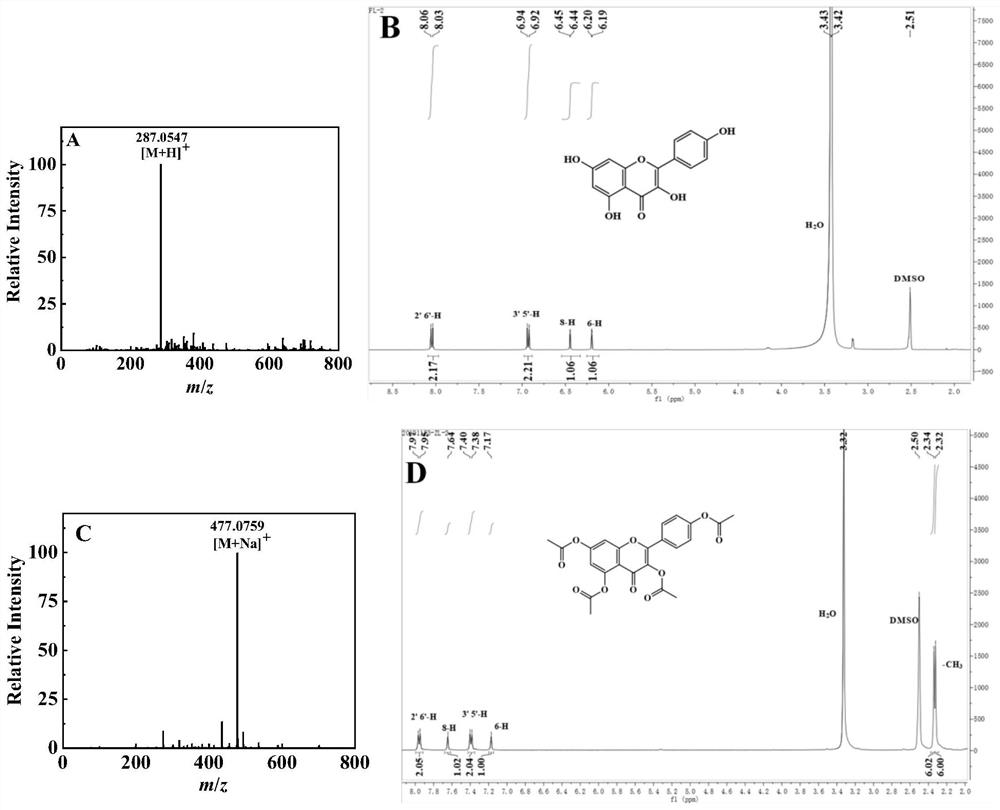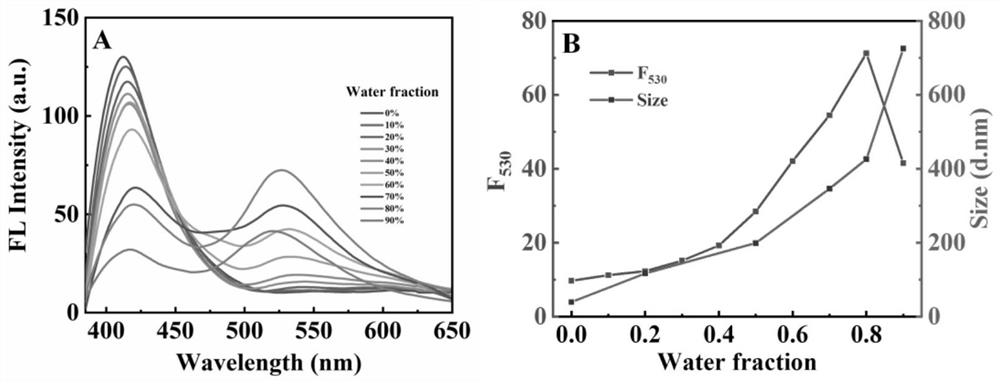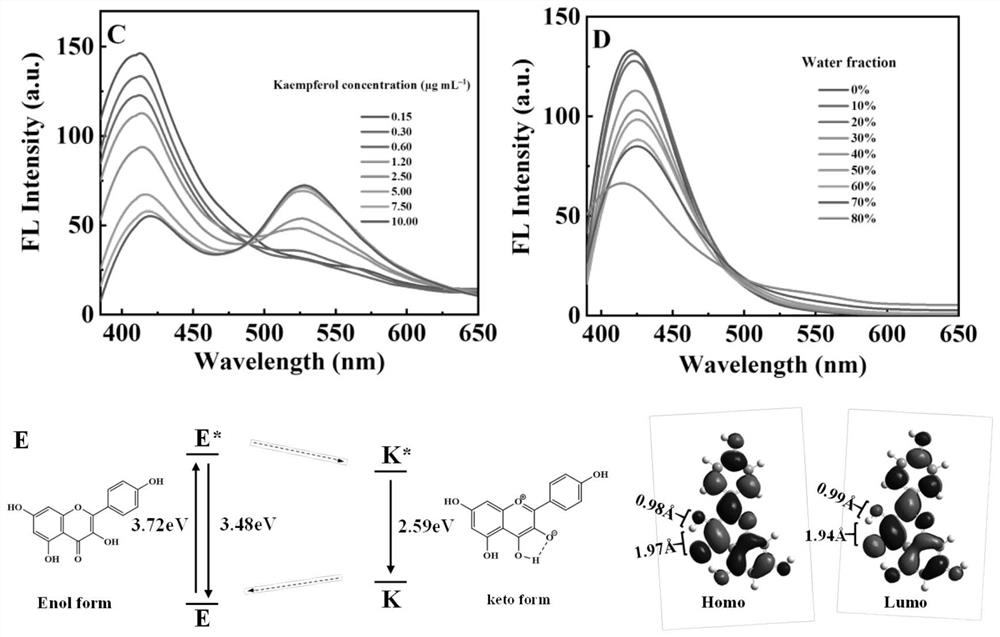Activatable aggregation-induced emission probe and application thereof in sensitive detection of carbaryl
A technique of aggregation-induced luminescence and probes, which is applied in the field of sensitive detection of carbaryl, can solve the problems that the ratio analysis of pesticides has not been reported, and achieve the effect of universality, high precision and simple operation method
- Summary
- Abstract
- Description
- Claims
- Application Information
AI Technical Summary
Problems solved by technology
Method used
Image
Examples
preparation example Construction
[0026] A method for synthesizing activatable aggregation-induced luminescent probes, comprising:
[0027] Mix kaempferol with acetic anhydride and pyridine for esterification reaction to obtain kaempferol tetraacetate, which can activate aggregation-induced luminescence probe.
[0028] In some embodiments, kaempferol is isolated and purified from leaves of Eucommia ulmoides. It should be noted that the raw materials for extracting kaempferol are not specifically limited in this application, and plants containing kaempferol can be used as extraction raw materials, such as: golden clematis, dodder seed, star anise lotus, tartary buckwheat bran, golden camellia tea , herringbone grass, aster, willow buckthorn leaves, etc.
[0029] In some embodiments, the mass ratio of kaempferol to acetic anhydride and pyridine is 143:27~30:48×10 -3 ~50×10 -3 .
[0030] In some embodiments, the condition of the esterification reaction is reflux at 70-75° C. for 1.5-2 hours.
[0031] In some...
Embodiment 1
[0040] 1. Experimental process
[0041] 1.1 Extraction of kaempferol
[0042] Eucommia leaves were collected from Cili Eucommia Forestry Center (Zhangjiajie, China), and the Eucommia leaves were dried, pulverized and extracted (350 g of Eucommia leaves, 2 L of 95% ethanol, reflux extraction 3 times, 2 h each time). The crude extract (39.50g) was dissolved in water and extracted with petroleum ether (400mL×3 times), ethyl acetate (400mL×3 times), n-butanol (400mL×3 times) (solvent polarity gradually increased). The ethyl acetate fraction (2.20 g) was crystallized by gradient elution of ethyl acetate / methanol, followed by repeated silica gel chromatography to obtain kaempferol (163.72 mg). Kaempferol:ESI-MS[M+H] + :m / z287.0547(C 15 h 11 o 6 ,-1.1ppm error)( figure 1 A); 1 H NMR (400MHz, DMSO-d 6 )δ(ppm)8.05(d, J=8.8Hz, 2H, H-2'and H-6'), 6.93(d, J=8.8Hz, 2H, H-3'and H-5'), 6.45 (d, J=2.0Hz, 1H, H-8), 6.19 (d, J=2.0Hz, 1H, H-6).
[0043] 1.2 Synthesis of kaempferol este...
PUM
 Login to View More
Login to View More Abstract
Description
Claims
Application Information
 Login to View More
Login to View More - R&D
- Intellectual Property
- Life Sciences
- Materials
- Tech Scout
- Unparalleled Data Quality
- Higher Quality Content
- 60% Fewer Hallucinations
Browse by: Latest US Patents, China's latest patents, Technical Efficacy Thesaurus, Application Domain, Technology Topic, Popular Technical Reports.
© 2025 PatSnap. All rights reserved.Legal|Privacy policy|Modern Slavery Act Transparency Statement|Sitemap|About US| Contact US: help@patsnap.com



